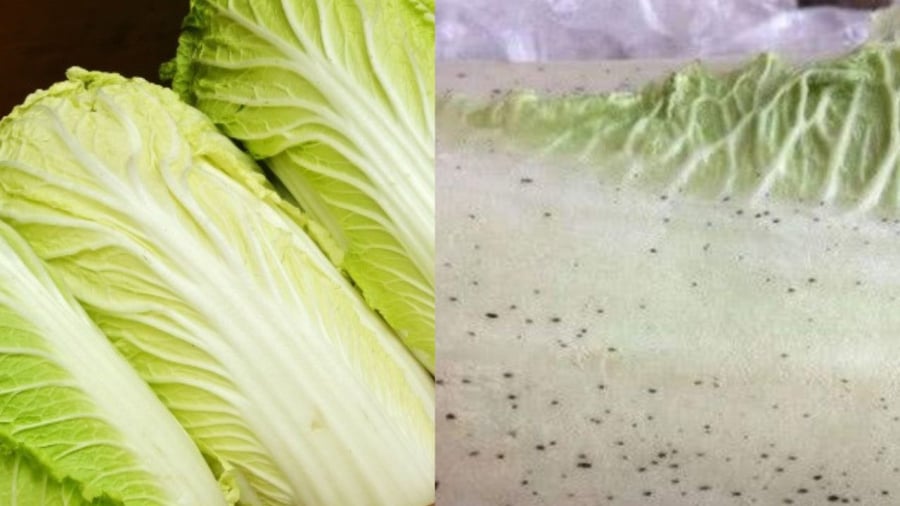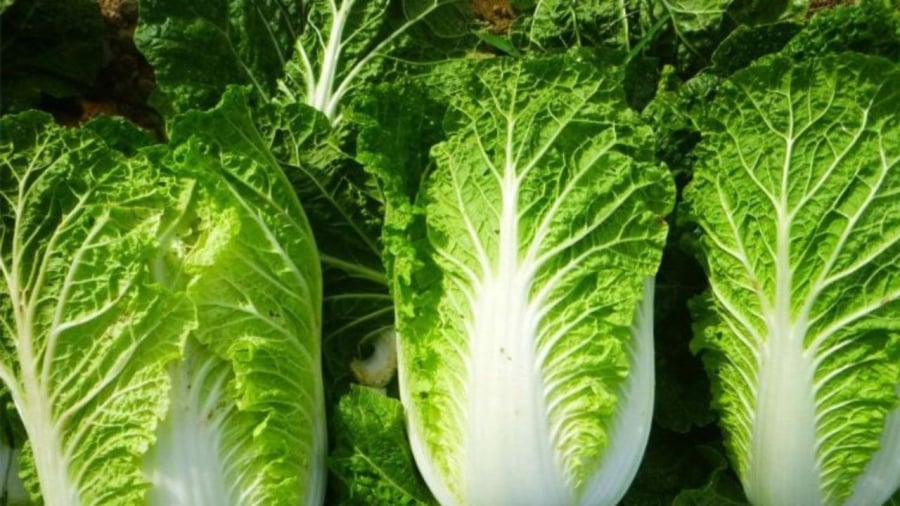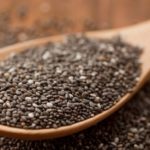Improved bok choy often has green stems and white stems. The reason for these two colors is due to different cultivation times.

Why do they have 2 colors?
White bok choy tends to appear early in the season, harvested early, when they have not had much photosynthesis. Green bok choy is usually grown in sunnier places and for a longer period of time. The difference in color between green and white bok choy is also due to geographical cultivation. If grown in cold regions or greenhouses, the stems are white, while in Vietnam, where there is sunny winter, the stems of bok choy will be green.
Therefore, green bok choy is often richer in fiber than white bok choy. Therefore, when eating, white bok choy is usually softer, less fibrous, while green bok choy is firmer, chewier, and has a stronger flavor. White bok choy is usually used for stir-frying, mixing, and pickling, while green bok choy is often used for boiling and soup.
White bok choy has more water and is more tender than green bok choy, so it spoils faster. Therefore, if you want to buy bok choy for long-term use, you should choose green ones instead of white ones.

Moreover, you should choose green or white bok choy depending on your family’s taste.
Bok choy is a type of vegetable that is rich in fiber and is believed to have benefits for cardiovascular support, brain health, and reducing discomfort during women’s menstrual periods…
Notes when using bok choy:
Bok choy is not as clean as you think: Some people think that the inside of bok choy, like cabbage, is very clean. In fact, bok choy or cabbage has residual herbicides, and when sprayed, they are wrapped inside it, which takes a long time to decompose in the environment. Therefore, when eating, you need to separate each leaf and wash each leaf of bok choy under running water for safety.
Bok choy is often rich in nitrate, so you should not cook it for a long time because reheating will generate nitrites, which are toxic to the body. Nitrites, when they enter the body and combine with hemoglobin, form methemoglobin, causing the body to lack oxygen, leading to symptoms of poisoning, such as difficulty breathing, nausea, vomiting, and paralysis.
Cooking bok choy for too long also leads to nutrient loss and a stronger, less appetizing smell.
If you find that the core inside the bok choy is rotten but the outside is fresh, you should discard it as it may have been contaminated with preservatives.
If you see many black spots on the bok choy stems but the leaves are still fresh, you should not choose it as this type has signs of spoilage and has been left for too long.

However, the following individuals should limit their consumption of bok choy:
People with digestive problems
Bok choy is a type of food with cool properties, so people with a cold constitution may experience stomach discomfort and diarrhea if they eat too much. People with poor digestion will also have difficulty digesting the large amount of rough fiber in bok choy if they eat too much.
People with constipation
If you have this condition, you should only eat boiled bok choy and not eat pickled bok choy because it will make the condition worse.
People with stomach pain
If you have stomach pain, eating raw bok choy or pickled bok choy can cause bloating and worsen the stomach condition. Therefore, people with stomach pain should not eat raw bok choy but should cook it before eating for better health and to avoid bloating.
Pregnant women
Pregnant women or those with conditions such as acid reflux, difficulty digesting, or allergies should not eat too much bok choy. Eating too much bok choy can cause indigestion, allergies, and frequent and severe acid reflux, which is not good for their own health and the health of the fetus. You should only eat a moderate amount of bok choy, and if you experience excessive nausea, you should not eat bok choy.
8 Common Mistakes People Make with Cutting Boards
Are you using your cutting board correctly? Many Vietnamese households rely on cutting boards in their kitchen, but not everyone knows how to use them properly, especially when it comes to wooden cutting boards. Check out these 8 mistakes to avoid when using a cutting board to ensure both hygiene and safety for everyone in your family.



































